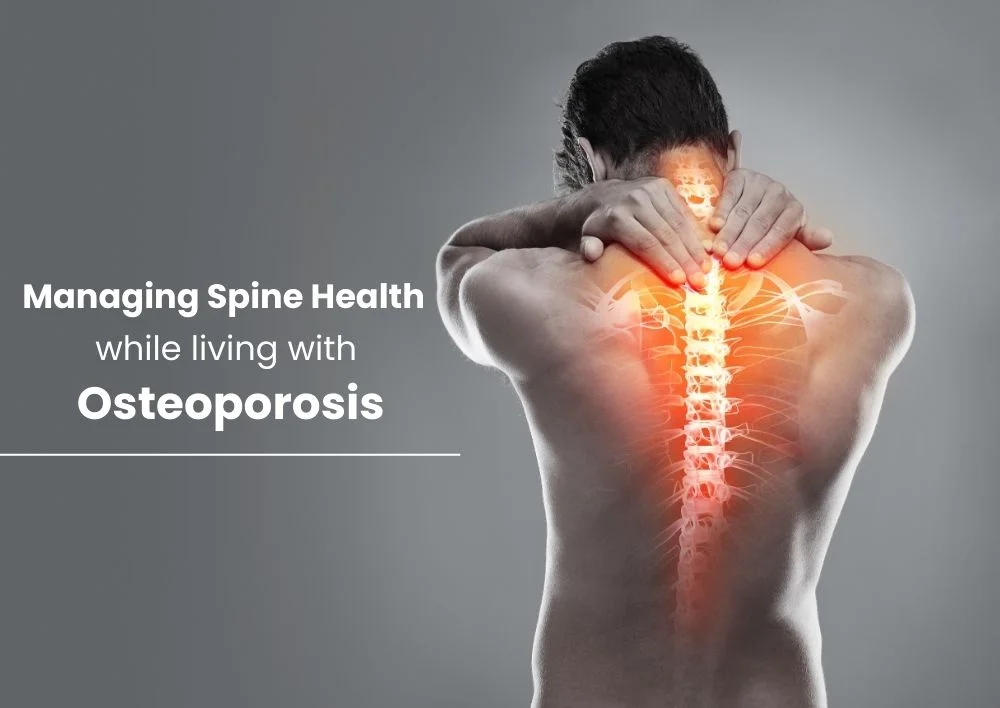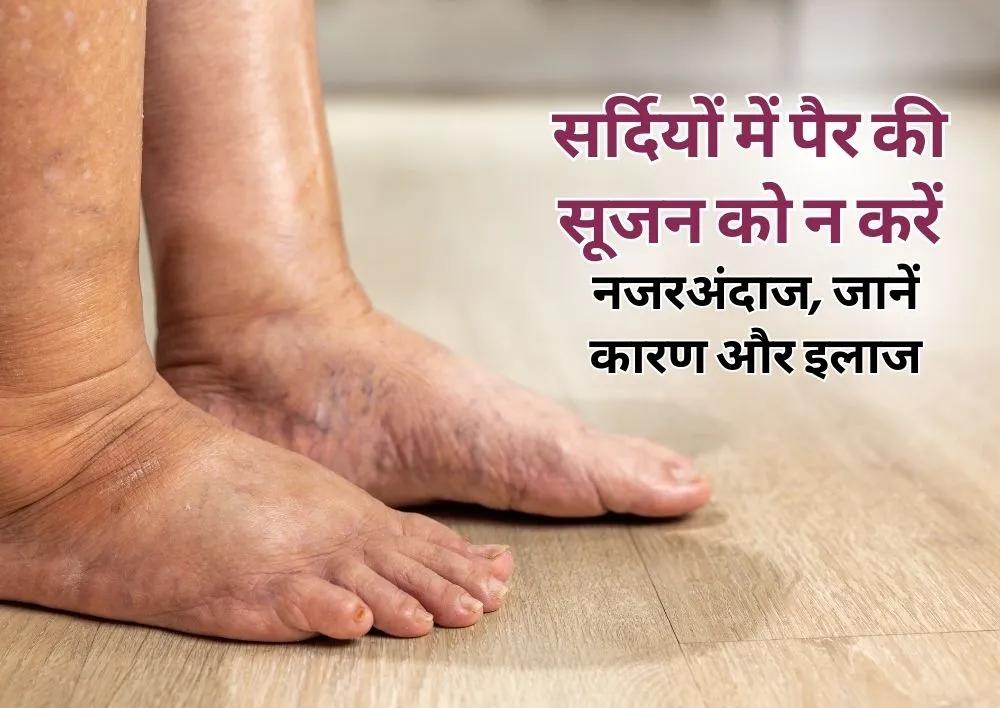Managing Spine Health While Living with Osteoporosis
Summary: Osteoporosis weakens bones, making the spine vulnerable to fractures and pain. Maintaining spine health through weight-bearing exercises, proper nutrition, good posture, and medical treatments can help manage osteoporosis effectively. Avoiding risk factors like smoking, excessive alcohol consumption, and a sedentary lifestyle is important.
Overview:
Osteoporosis is a condition that weakens bones, making them weak and more prone to fractures. It usually affects the spine, leading to painful fractures and deformities that affect the overall quality of life. While osteoporosis can be challenging to manage, maintaining good spine health is essential to prevent fractures, relieve discomfort, and improve mobility. In this post, we will explore how you can manage your spine health while living with osteoporosis and ensure a more active, pain-free life.
What is Osteoporosis?
According to the best orthopedists in gurgaon at Miracles Apollo Cradle/Spectra, Osteoporosis is a progressive condition where bones lose density and strength over time. It is usually called the "silent disease" because it progresses without symptoms until a bone breaks. The spine, or vertebrae, is one of the most commonly affected areas, leading to issues such as compression fractures, severe pain, and reduced flexibility.
Osteoporosis Management
Your spine is a complex structure composed of bones, muscles, ligaments, and nerves. When osteoporosis weakens the bones in your spine, they can become more brittle, leading to fractures or even slight compression. These fractures are usually caused by minor movements, such as bending over or lifting a light object.
The spine is responsible for:
-
Protecting the spinal cord
-
Allowing movement and flexibility
-
Supporting the body’s weight
If the spine weakens, it becomes difficult to perform everyday tasks without pain or fear of injury. Therefore, managing spine health is important for anyone living with osteoporosis.
1. Bone-Strengthening Exercises for Osteoporosis
Physical activity is one of the most effective ways to manage osteoporosis and maintain spine health. Some exercises can help strengthen bones and improve posture. However, activities with high impact, such as running, should be avoided. Here are some exercises that can help:
A. Weight-Bearing Exercises
Weight-bearing exercises work by putting weight on your bones, which facilitates bone growth and helps prevent bone loss. These can include:
-
Walking: A low-impact way to improve bone density and keep your spine strong. Walking 30 minutes a day, at least 5 days a week, can have a significant effect on your spine health.
-
Dancing: This fun activity can help with balance, coordination, and strengthening bones.
-
Stair climbing: Climbing stairs helps maintain bone strength and improve posture.
B. Strengthening Exercises
Building muscle around your spine helps to protect weak bones. Strength training can improve posture and reduce the risk of fractures. You can perform:
-
Resistance band exercises: These can be used to strengthen your back, shoulders, and core muscles. Strong muscles help support your spine and reduce the strain on your bones.
-
Weight lifting: Using light weights, 2-3 times a week, can help increase bone density and improve strength.
C. Balance and Flexibility Exercises
Balance exercises help reduce the risk of falls, which can be a major cause of fractures in people with osteoporosis. Flexibility exercises like yoga can help improve spinal movement and reduce stiffness. Specific yoga poses are designed to improve posture, reduce pain, and enhance flexibility. However, it is important to avoid poses that involve deep backbends or twisting motions.
2. Proper Nutrition for Spine Health
Good nutrition plays an important role in bone health. The bones in your spine are no different. To strengthen your bones and prevent fractures, your diet should include:
A. Calcium
Calcium is the building block of bone health. For adults with osteoporosis, it is important to consume enough calcium daily to prevent further bone loss. Foods rich in calcium include:
-
Dairy products like milk, yogurt, and cheese.
-
Leafy greens like kale, and spinach.
-
Fortified foods like fortified cereals, and almond milk.
-
Fish with edible bones
The daily calcium intake recommendation differs based on age and gender. For most adults, it is about 1,000 mg per day, but it may increase to 1,200 mg for women over 50 and men over 70.
B. Vitamin D
Vitamin D is important for calcium absorption. Without sufficient vitamin D, your body cannot absorb enough calcium, even if you are eating plenty of it. Natural sources of vitamin D include:
-
15-30 mins. of sunlight exposure per day.
-
Fatty fish, including salmon and mackerel.
-
Fortified foods like milk, cereals, and juices.
The recommended daily intake of vitamin D for most adults is 800-1,000 IU. Your doctor may recommend supplements if you have difficulty getting enough from food and sunlight.
C. Protein
Protein plays an important role in bone health as it helps in the building and repair of bone tissue. Including a moderate amount of protein in your diet can help maintain strong bones. Protein-rich foods include:
-
Lean meats
-
Fish
-
Beans and legumes
-
Nuts and seeds
3. Posture Awareness
Maintaining good posture is necessary to reduce stress on your spine. Poor posture can worsen back pain and increase the risk of vertebral fractures. Focus on keeping your spine aligned and avoiding slumping or leaning forward.
Tips for Improving Posture:
Stand tall with your shoulders pulled back and your stomach pulled in.
-
Sit properly: Keep your feet flat on the floor and your back straight.
-
Avoid hunching over: When using electronic devices, make sure you are not slouched, as this can strain the spine.
-
Use supportive furniture: Chairs with good back support can reduce the strain on your spine.
4. Medications for Osteoporosis and Spine Health
If you are diagnosed with osteoporosis, your doctor may recommend medications to help manage the condition and prevent further bone loss. These medications can improve bone density, reduce the risk of fractures, and relieve spine pain. It is important to follow your doctor’s recommendations and take medications as prescribed to help manage your osteoporosis and protect your spine.
5. Avoiding Risk Factors for Osteoporosis
Certain lifestyle choices and habits can worsen osteoporosis and damage your spine. Here are some things to avoid:
A. Smoking
Smoking has a negative impact on bone health. It leads to bone loss and raises the risk of fractures. If you smoke, quitting can significantly reduce your risk of osteoporosis and related fractures.
B. Excessive Alcohol Consumption
Excessive drinking can interfere with the body’s ability to absorb calcium, which can weaken bones. Limiting alcohol intake to one drink per day for women and two for men is recommended.
C. Lack of Physical Activity
A sedentary lifestyle leads to muscle weakness and loss of bone density. Try to incorporate physical activity into your daily routine, as outlined above, to maintain strong bones and a healthy spine.
6. Preventing Spine Injuries and Falls
Since osteoporosis increases the risk of fractures, taking precautions to prevent falls is important. Here are some safety tips:
-
Remove tripping hazards: Keep your home free from obstacles such as loose rugs or electrical cords.
-
Wear supportive shoes: Choose shoes that provide stability and support to reduce the risk of falling.
-
Use assistive devices: If needed, use a walker or cane to provide extra balance and stability.
-
Keep your home well-lit: Ensure hallways and stairways are brightly lit to prevent falls.
Osteoporosis Symptoms
Osteoporosis typically doesn’t show symptoms until a fracture occurs. However, several signs might suggest bone loss or weakened bones in the spine:
-
Back pain: This is often caused by a fractured or collapsed vertebra in the spine. The pain might be sharp and sudden or chronic, making it difficult to carry out everyday activities.
-
Loss of height: Over time, compression fractures in the spine can lead to a gradual loss of height, as the bones become weaker and compressed.
-
Stooped posture: As bones in the spine weaken, it can lead to a curved or hunched posture.
-
Fractures with minimal trauma: In severe cases, osteoporosis can cause fractures from minimal incidents, such as coughing, sneezing, or bending over.
If you notice any of these symptoms, it is essential to consult with an ortho doctor near you for proper diagnosis and treatment.
Osteoporosis Causes
Osteoporosis occurs when the process of bone remodeling becomes unbalanced. The body constantly breaks down old bone tissue and forms new bone. When the breakdown of bone exceeds the formation of new bone, the bones become weak and brittle.
Several factors contribute to osteoporosis, including:
-
Aging: Bone density naturally decreases with age, especially after menopause in women, when estrogen levels decline, which helps maintain bone density.
-
Hormonal changes: For women, the decline in estrogen during menopause is a significant cause of osteoporosis. In men, low testosterone levels can also increase the risk of bone loss.
-
Genetics: If you have a family history of osteoporosis, you may be at a higher risk of developing the condition.
-
Poor nutrition: Insufficient calcium and vitamin D intake can lead to weakened bones. A diet lacking in these essential nutrients increases the risk of osteoporosis.
-
Sedentary lifestyle: Physical activity, particularly weight-bearing exercises, helps maintain bone strength. Lack of exercise leads to muscle and bone weakness.
-
Medical conditions: Certain conditions like rheumatoid arthritis, kidney disease, or hormonal disorders can increase the risk of osteoporosis.
-
Medications: Long-term use of corticosteroids or certain medications can weaken bones.
When to Consult a Doctor?
It is important to consult an orthopedic if you experience:
Severe or persistent back pain: This could indicate a vertebral fracture.
-
Sudden loss of height: A quick decrease in height may signal spinal compression fractures.
-
Frequent fractures: If minor falls or activities result in broken bones, osteoporosis could be worsening.
-
Postural changes: A curved spine or difficulty maintaining posture needs medical evaluation.
-
Family history of osteoporosis: If osteoporosis runs in your family, early screening is recommended.
Conclusion:
Living with osteoporosis requires proactive measures to maintain spine health and overall well-being. Through a combination of appropriate exercises, a balanced diet, good posture, and medication, you can manage osteoporosis effectively and reduce the impact it has on your spine. By following the strategies outlined in this post, you can reduce the risk of fractures, alleviate pain, and continue enjoying an active lifestyle despite the challenges osteoporosis may present.
If you are struggling with spine pain or osteoporosis, consult an orthopedic doctor near you at Miracles Healthcare for personalized advice and treatment options. Managing your spine health is key to living a more comfortable and fulfilling life, and with the right approach, you can protect your bones and enjoy long-term wellness.





.webp)








Was the information useful?
0 0